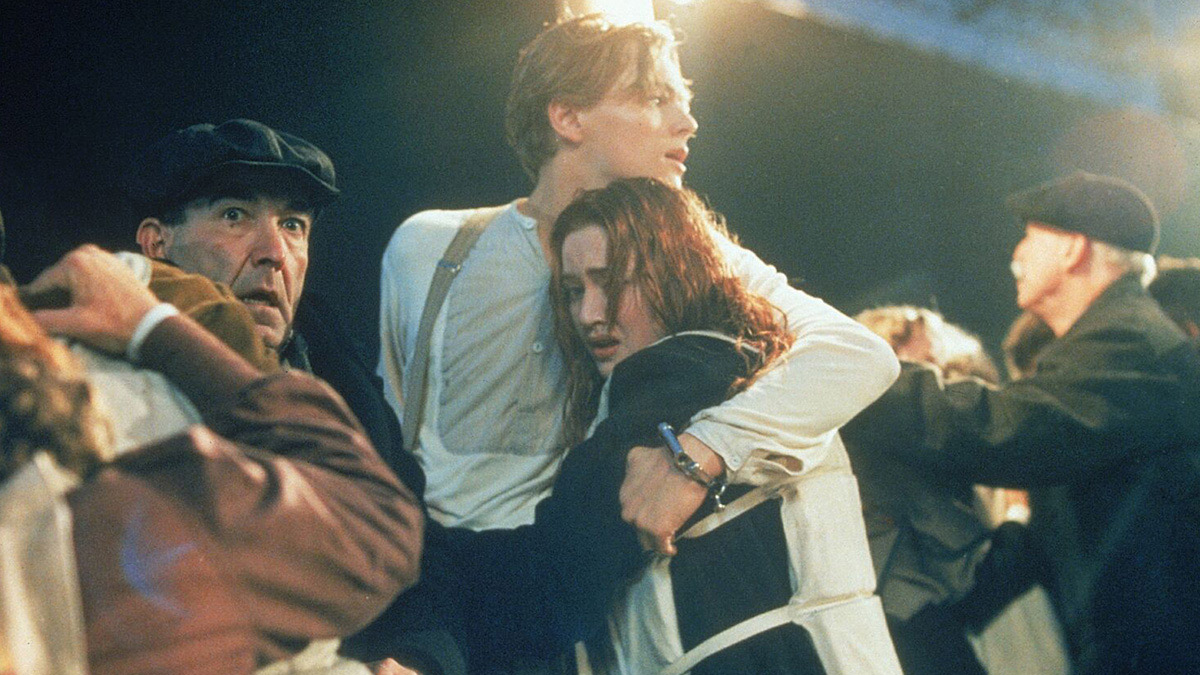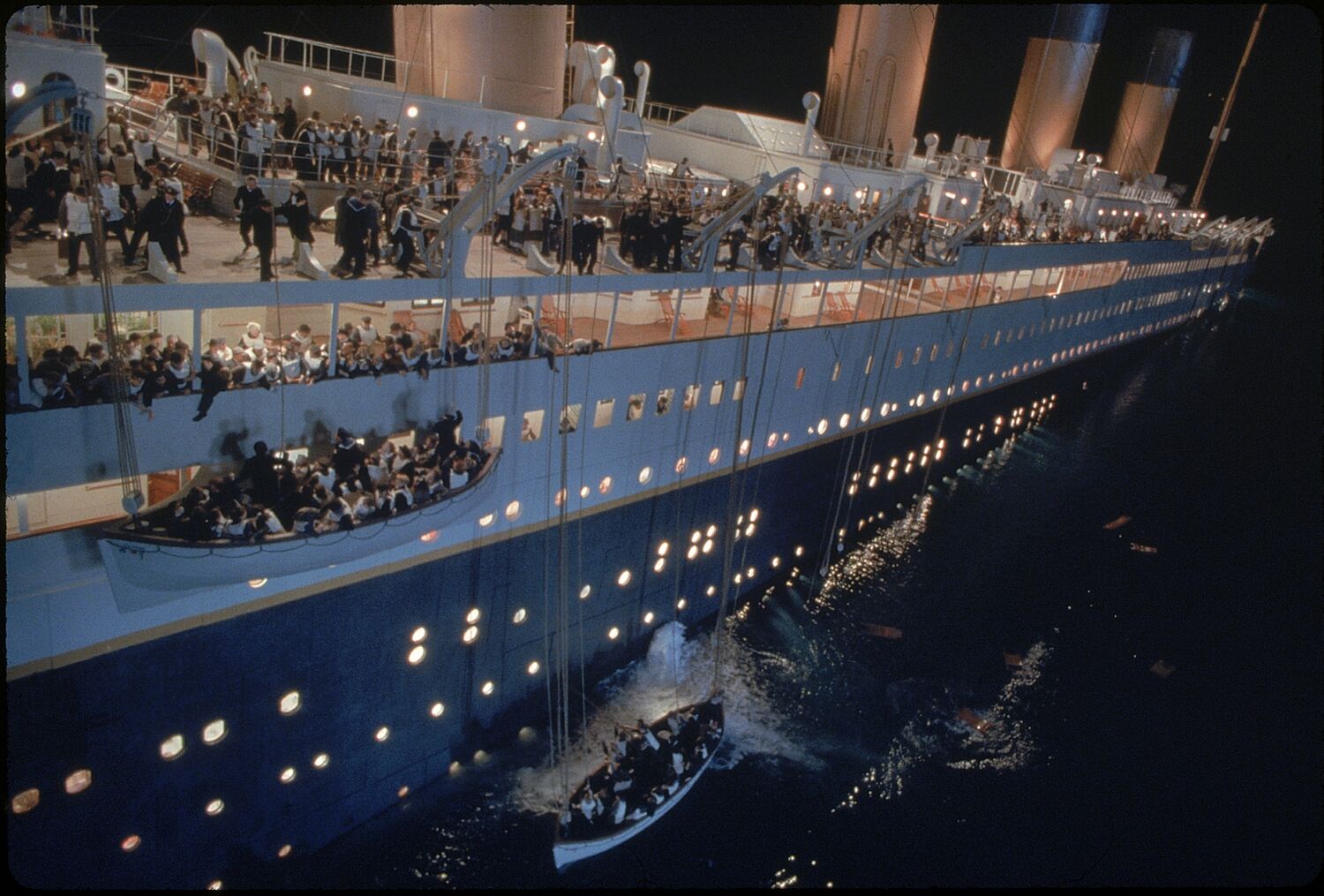
(C)2013 Twentieth Century Fox Home Entertainment LLC. All Rights Reserved.
An unprecedented challenge that created the spectacle of Titanic, one of the most moving movies of the 20th century.
2019.05.14
A spectacle realized with the latest technology and ingenuity
On the other hand, a separate set was created for the sequence in which the ship's stern stands upright at the end of the ship's sinking. The deck was designed to tilt from 1 to 90 degrees using massive hinges and hydraulics. Because the actors holding on to the railing at the end were over 30 meters above the ground, a construction crane was used for filming, with Cameron in a cage at the tip of the crane to direct the shoot.
After the ship's hull breaks in two, the stern returns to horizontal, but is pulled by the submerged front half of the ship, tilting all at once, standing up vertically, and then sinking all at once - a book typical of Cameron, who specializes in action. It's the best spectacle in the movie. For this shoot, 100 male and female stuntmen worked closely with a stunt coordinator to perform a series of stunts in which the ship slid down one after another as the angle of the deck increased. Cameron himself slides down with his camera, filming the stuntmen's performance up close.

"Titanic" (C)2013 Twentieth Century Fox Home Entertainment LLC. All Rights Reserved.
Although Cameron paid careful attention to safety, an accident occurred that left two stuntmen with broken bones. Therefore, Digital Domain (the visual effects company that Cameron started before making True Lies ), which was in charge of the visual effects for this film, used motion capture to capture the passengers falling from the steep stern of the ship. Request to draw with CG. Motion capture was still in its infancy at the time, and ``Titanic'' was the first time a normal human being was depicted using CG using motion capture.
Specifically, the set was all green, from the background to the cushioning mat, and a stuntman wearing a bodysuit with markers attached fell from a height, and his movements were filmed with a special camera and converted into data. Based on this, a ``digital stuntman'' is created, whose face and clothes are drawn using CG, and then combined with the live-action footage in post-production. To prepare for such post-production work, a roll of toilet paper was dropped from the stern railing during the filming of the live-action parts. By compositing a digital stuntman to overwrite the trajectory of this falling roll, we were able to more realistically depict passengers falling tens of meters while accelerating.
Whenever Cameron faced a problem, he devised a solution and pursued the ideal image. However, due to this uncompromising attitude, the production costs increased further and the production schedule was delayed. The release date was pushed back from its original July 1997 date to December 19 of the same year, and the production cost reached $200 million. 1994's ``True Lies'' made it into the Guinness World Records for having a production cost of over $100 million, The Day After, the budget had to be doubled.

